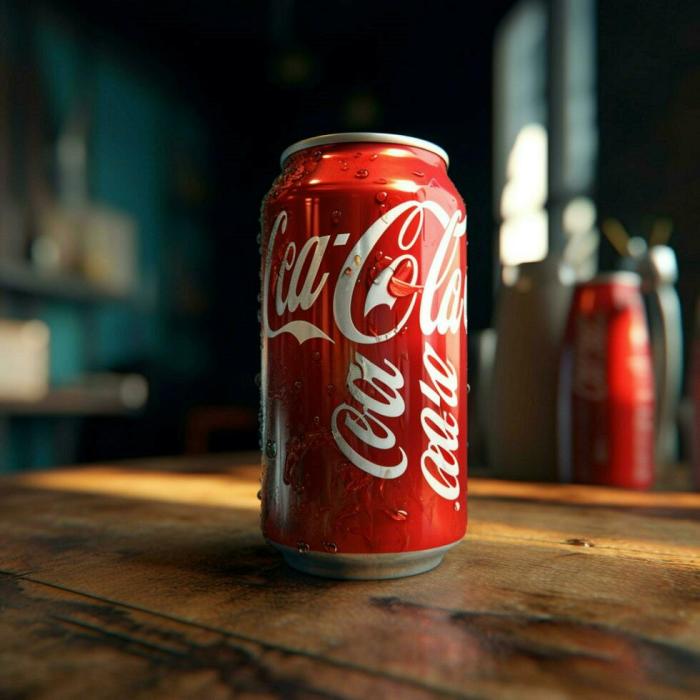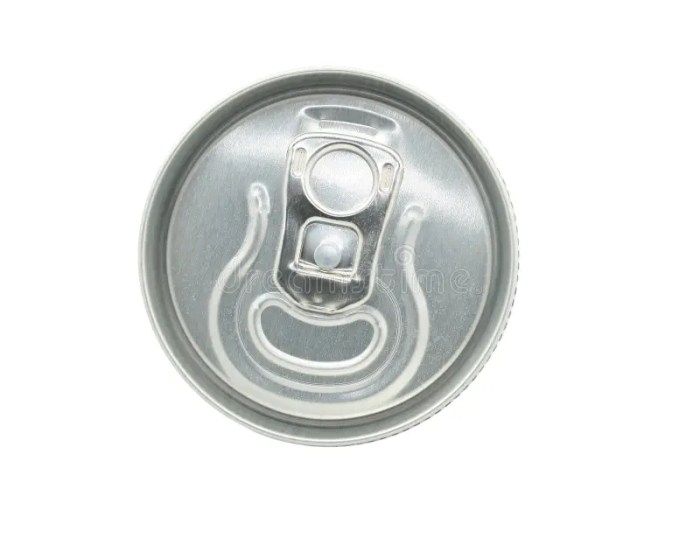Can allergies cause body aches? This question delves into the fascinating connection between allergic reactions and the often-misunderstood discomfort of body aches. Understanding the intricate mechanisms behind this link is key to recognizing and managing these symptoms effectively. From the initial triggers to the physiological responses, this exploration unravels the mysteries surrounding allergic body aches, offering insights into diagnosis, treatment, and prevention.
Allergies, essentially an overreaction of the immune system to harmless substances, can manifest in various ways, including body aches. This post will cover different types of allergic reactions, common allergens, and how to differentiate allergic body aches from other conditions. We’ll also discuss treatment strategies, prevention tips, and the importance of seeking professional medical advice.
Introduction to Allergies and Body Aches
Allergies are an overreaction of the immune system to a harmless substance, called an allergen. This reaction triggers the release of histamine and other chemicals, leading to a range of symptoms. Understanding the mechanisms behind allergic reactions is crucial for recognizing and managing potential health issues. These reactions can manifest in various ways, impacting different parts of the body, and sometimes causing discomforting body aches.Allergic reactions are broadly categorized into different types, each with its own set of characteristics.
The body’s response to an allergen can vary from mild discomfort to severe, life-threatening conditions. Some types of allergic reactions are more likely to cause body aches than others, and recognizing these patterns can aid in accurate diagnosis and effective treatment.
Different Types of Allergic Reactions
Allergic reactions are classified based on the immune system’s response and the time it takes for symptoms to develop. Immediate hypersensitivity reactions, often involving immunoglobulin E (IgE), are characterized by rapid onset of symptoms, while delayed hypersensitivity reactions involve other immune cells and manifest hours or even days later. Both types can potentially cause body aches, though the mechanisms and contributing factors may differ.
Common Allergens Associated with Body Aches
Several substances can trigger allergic reactions that manifest as body aches. Foods like peanuts, shellfish, and dairy products are frequent culprits. Certain medications, including penicillin and aspirin, can also induce allergic reactions, sometimes leading to widespread body discomfort. Environmental allergens, such as pollen, mold spores, and dust mites, are also capable of triggering reactions that include body aches, though these are often accompanied by other symptoms like respiratory issues.
Symptoms Comparison of Different Allergy Types
| Allergy Type | Common Symptoms | Body Aches (Frequency and Description) |
|---|---|---|
| Immediate Hypersensitivity (e.g., food allergies) | Hives, itching, swelling, difficulty breathing, vomiting, diarrhea | Possible, but less frequent than other symptoms. May occur as a part of a more widespread inflammatory response. Aches may be diffuse and mild to moderate. |
| Delayed Hypersensitivity (e.g., contact dermatitis) | Skin rash, itching, redness, swelling at the site of contact, fatigue | More likely to include localized muscle soreness or aches at the site of contact or as a result of inflammation spreading to other areas. |
| Respiratory Allergies (e.g., pollen allergies) | Runny nose, sneezing, congestion, coughing, shortness of breath | Possible, though often accompanied by other symptoms like fatigue or general malaise. Aches are usually not the primary symptom. |
This table provides a general overview. The specific symptoms and their severity can vary greatly depending on the individual and the allergen involved. Consult a medical professional for accurate diagnosis and treatment.
Symptoms and Characteristics of Body Aches Related to Allergies
Body aches are a common complaint among allergy sufferers, often mistaken for other conditions. Understanding the specific characteristics of these aches can aid in proper diagnosis and management. This section will delve into the various ways allergies manifest as body aches, examining their intensity, duration, and how they might differ from other pain types.
Different Manifestations of Allergic Body Aches
Allergic body aches can present in various forms, from mild discomfort to significant pain. They are often accompanied by other allergy symptoms, such as runny nose, sneezing, or itchy eyes. The specific type of ache can vary depending on the allergen and the individual’s sensitivity. For instance, some individuals might experience a dull, throbbing pain, while others might describe a sharp, localized pain.
Intensity and Duration of Allergic Body Aches
The intensity and duration of allergic body aches can vary considerably. Mild aches might last for a few hours, while more severe cases can persist for days. The intensity often correlates with the severity of the allergic reaction. For example, a severe reaction to bee sting might result in intense, persistent muscle aches throughout the affected areas.
Generally, these aches are temporary and subside as the allergic reaction resolves.
Differentiating Allergic Body Aches from Other Pain Types
Distinguishing allergic body aches from other types of pain, such as those related to musculoskeletal issues, can be challenging. However, a key differentiating factor is the presence of other allergy symptoms. If body aches are accompanied by a runny nose, sneezing, or skin rash, it’s more likely that the aches are related to an allergic reaction. Additionally, the location and pattern of the aches can sometimes offer clues.
So, can allergies actually cause body aches? Sometimes, yes, but it’s often a bit more complicated than that. It’s important to remember that sometimes symptoms like aches and pains can be a sign of something more serious, like stroke level blood pressure. If you’re experiencing persistent body aches along with other allergy symptoms, it’s crucial to see a doctor to rule out underlying conditions and get the right diagnosis and treatment for your specific situation.
Ultimately, figuring out the root cause of body aches, especially if accompanied by other symptoms, is key.
For example, if the aches are localized to the areas where hives appear, it strongly suggests an allergic origin.
Common Locations of Allergic Body Aches
The table below highlights common locations of body aches associated with allergies. Note that this is not an exhaustive list, and the exact location can vary significantly.
| Body Part | Description |
|---|---|
| Muscles (especially in the limbs) | Dull, aching, or throbbing sensations in the muscles, often described as a general discomfort. |
| Joints | Stiffness, soreness, or tenderness in joints, possibly mimicking arthritis symptoms. |
| Head | Headaches, often described as dull or throbbing, can be accompanied by other allergy symptoms. |
| Throat | Sore throat, often a symptom of upper respiratory allergies. |
| Back | Aching or stiffness in the back, potentially due to muscle tension or inflammatory responses. |
Underlying Mechanisms and Physiology
Allergic reactions, while often characterized by itchy skin or runny noses, can sometimes manifest as body aches. Understanding the underlying physiological processes is crucial for comprehending why this happens. These aches are not simply a byproduct of discomfort; they’re a direct result of the body’s complex immune response to perceived threats.The body’s response to allergens is a multi-layered process involving various cells and signaling pathways.
This intricate dance of the immune system can trigger inflammation, which in turn leads to pain and discomfort, sometimes presenting as body aches. Different types of allergies can elicit different intensities and locations of these aches, influenced by the specific allergen and the individual’s immune system.
Inflammation and the Immune Response
The body’s immune system is a remarkable network designed to protect against foreign invaders. When an allergen enters the body, it triggers an immune response, often resulting in inflammation. This response involves the release of various chemicals, including histamine and other inflammatory mediators, from specialized immune cells like mast cells.
“Inflammation is a complex biological response to harmful stimuli, such as pathogens, damaged cells, or irritants.”
These inflammatory mediators cause blood vessels to dilate and become more permeable, allowing immune cells and fluids to reach the affected area. This increased blood flow and fluid accumulation are part of the body’s attempt to eliminate the allergen and repair any damage. However, this process can also lead to pain and discomfort. The pain signals, interpreted by the nervous system, can result in the sensation of body aches.
Types of Allergic Reactions and Inflammation, Can allergies cause body aches
Allergic reactions vary significantly in their manifestations. While some reactions, like hay fever, are characterized by localized symptoms, others, like anaphylaxis, involve a more widespread and potentially life-threatening response. The intensity and location of body aches can vary based on the type of allergic reaction.
- Food allergies often manifest with a range of symptoms, including hives, swelling, and digestive issues. In some cases, these allergies can lead to muscle aches and pain throughout the body. For example, a severe peanut allergy might cause widespread inflammation, leading to aches in the muscles and joints.
- Environmental allergies, such as those triggered by pollen or dust mites, typically result in localized inflammation in the respiratory system, leading to symptoms like sneezing and coughing. However, in some individuals, these reactions can trigger more generalized aches and pains, although less severe than with food allergies.
- Drug allergies can cause a variety of symptoms, from mild skin rashes to severe reactions like anaphylaxis. In cases of drug allergies, body aches can be a component of the overall reaction, reflecting the widespread inflammatory response triggered by the offending drug.
Immune System Response to Allergens
The immune system’s response to allergens involves a complex cascade of events. When an allergen is encountered, specialized immune cells, such as B cells and T cells, recognize it as foreign. These cells then trigger the production of antibodies, which bind to the allergen and mark it for destruction. This interaction often leads to the release of inflammatory mediators.
- The production of antibodies is a crucial part of the immune response to allergens. Different types of antibodies (e.g., IgE) are associated with different allergic reactions.
- The release of histamine and other inflammatory mediators is a hallmark of allergic reactions. These mediators cause the characteristic symptoms of allergy, including itching, swelling, and pain.
Distinguishing Body Aches from Other Conditions

Body aches, a common complaint, can stem from various sources. While allergies can certainly cause discomfort, it’s crucial to differentiate them from other potential underlying conditions. Misdiagnosis can lead to delayed treatment and worsen the overall health experience. This section will explore other causes of body aches and provide a framework for distinguishing allergic aches from those related to infections or musculoskeletal issues.
Potential Causes of Body Aches
Body aches are a common symptom with diverse origins. Beyond allergies, several other factors can contribute to this discomfort. Infections, such as viral or bacterial illnesses, frequently manifest with widespread aches. Musculoskeletal issues, including strains, sprains, and arthritis, also produce pain in the affected areas. Even certain medications can cause body aches as a side effect.
Accurately identifying the root cause is paramount for effective treatment.
Differentiating Allergic Body Aches from Other Pains
Distinguishing allergic body aches from other types of pain often relies on a combination of symptom patterns and medical history. Allergic reactions typically involve a broader range of symptoms, beyond just aches. For example, allergic reactions can cause hives, itching, and difficulty breathing, alongside the aches. Infections, on the other hand, often present with fever, chills, and localized inflammation, whereas musculoskeletal issues might be accompanied by stiffness or limited range of motion.
Understanding the entire clinical picture is vital for accurate diagnosis.
Symptoms to Consider
Identifying the source of body aches requires careful consideration of the accompanying symptoms. This table Artikels common symptoms that help differentiate allergic aches from other conditions:
| Symptom | Allergic Body Aches | Infections (e.g., Viral/Bacterial) | Musculoskeletal Issues (e.g., Strains/Sprains) |
|---|---|---|---|
| Pain Location | Often generalized, not limited to a specific area | May be localized or generalized, often with localized tenderness | Specific to the affected joint or muscle group |
| Severity | Can range from mild to moderate | Can range from mild to severe, potentially escalating | Severity varies depending on the extent of the injury |
| Other Symptoms | Hives, itching, runny nose, sneezing, difficulty breathing | Fever, chills, fatigue, nausea, vomiting, cough, localized swelling | Stiffness, limited range of motion, swelling, redness in the affected area |
| Duration | Can be acute or chronic, depending on the trigger | Usually acute, with symptoms typically resolving within a few days to several weeks | Can be acute (immediate) or chronic (persisting) depending on the injury’s severity and treatment response |
Importance of Proper Diagnosis and Medical Evaluation
Accurate diagnosis is critical for effective treatment. A healthcare professional can evaluate the patient’s symptoms, medical history, and conduct necessary tests to determine the underlying cause of body aches. Ignoring or misinterpreting symptoms can lead to delayed treatment and potential complications. A proper diagnosis ensures that the appropriate treatment is initiated to alleviate the discomfort and address the root cause.
Potential Severity and Complications
While body aches are often a mild symptom of an allergic reaction, they can sometimes indicate a more serious underlying issue. Understanding the potential severity and the circumstances under which they warrant concern is crucial for appropriate management. Ignoring persistent or worsening aches could delay necessary treatment and potentially lead to complications.Allergic reactions vary in intensity, and the associated body aches can range from a mild, temporary discomfort to a more pronounced and prolonged pain.
This variability underscores the importance of careful monitoring and appropriate medical attention when symptoms become concerning.
Potential Severity of Allergic Body Aches
Allergic body aches, while typically resolving with treatment, can escalate in severity depending on the trigger and the individual’s sensitivity. Mild aches might resolve quickly with over-the-counter pain relievers and avoidance of the allergen. However, more severe reactions can cause widespread muscle pain, accompanied by other systemic symptoms like fever, swelling, and difficulty breathing. These symptoms necessitate immediate medical intervention.
Circumstances Warranting Concern
Certain situations demand immediate medical attention, regardless of the perceived severity of the body aches. These situations include:
- Sudden onset of intense, widespread body aches, especially if accompanied by difficulty breathing, dizziness, or loss of consciousness. This could indicate a severe allergic reaction, known as anaphylaxis, requiring emergency medical care.
- Body aches persisting for several days despite treatment. This prolonged duration could suggest an underlying infection or other medical condition that requires further investigation.
- Body aches associated with other concerning symptoms, such as hives, swelling in the face or throat, or difficulty swallowing. These additional symptoms often indicate a more serious allergic response.
Potential Complications from Untreated Allergic Body Aches
Untreated allergic reactions with body aches can lead to several complications, ranging from discomfort to potentially life-threatening consequences.
- Delayed Diagnosis and Treatment of Underlying Conditions: Persistent body aches, if not properly investigated, can mask the symptoms of more serious conditions, such as infections or autoimmune disorders. Prolonged delays in diagnosis and treatment can lead to further complications and potential long-term health consequences.
- Anaphylaxis: A severe allergic reaction, anaphylaxis, can occur rapidly and without warning. This life-threatening condition is characterized by a sudden drop in blood pressure, difficulty breathing, and swelling of the throat and airways. If untreated, anaphylaxis can lead to loss of consciousness, cardiac arrest, and even death.
- Chronic Pain Conditions: While less common, some individuals may experience lingering muscle pain and stiffness following severe allergic reactions. In such cases, persistent body aches could contribute to the development of chronic pain conditions, requiring ongoing management and support.
Progression of Allergic Reactions Causing Body Aches (Illustrative Table)
| Stage | Symptoms | Characteristics |
|---|---|---|
| Initial | Mild body aches, localized | Typically mild and short-lived, often resolving with avoidance of the allergen. |
| Intermediate | Widespread body aches, increasing intensity | Symptoms become more pronounced, affecting larger muscle groups. Other symptoms like fever or hives may emerge. |
| Advanced | Severe body aches, systemic symptoms | Characterized by intense pain, difficulty breathing, swelling, and potentially loss of consciousness. This stage requires immediate medical attention. |
Management and Treatment Strategies
Managing allergic reactions and accompanying body aches requires a multifaceted approach. Effective strategies involve a combination of medication, lifestyle adjustments, and professional guidance. Understanding the limitations of over-the-counter remedies and the crucial role of healthcare consultation is key to successful management. Ultimately, a personalized approach tailored to individual needs and sensitivities is essential for optimal results.Effective allergy management often involves a combination of strategies.
A crucial element is recognizing the limits of over-the-counter medications and the importance of professional medical advice. This allows for a personalized approach to managing allergic reactions and their associated symptoms, such as body aches. Combining various methods, such as medication, lifestyle changes, and home remedies, can provide comprehensive relief and long-term well-being.
So, can allergies actually cause body aches? It’s a tricky question, and sometimes it’s hard to pinpoint the exact cause. Learning how to properly use a glucometer can help you distinguish between allergy symptoms and potential diabetes-related issues, as some symptoms can overlap. For a comprehensive guide on how to use a glucometer, check out this helpful resource: how to use a glucometer.
Ultimately, if you’re experiencing persistent body aches, it’s always best to consult a doctor to get a proper diagnosis.
Over-the-Counter Medications
Over-the-counter (OTC) medications can provide temporary relief from allergy symptoms, including body aches. However, they have limitations and may not be suitable for everyone. OTC antihistamines can help alleviate itching and some discomfort, but they may not address all aspects of an allergic reaction. Analgesics like ibuprofen or acetaminophen can help manage muscle aches, but they do not address the underlying allergic response.
It is important to carefully review the package insert and consult with a pharmacist or healthcare professional before taking any OTC medication, especially if you have other health conditions or are taking other medications. OTC medications are often not suitable for severe allergic reactions.
Medical Consultation
Consulting with a healthcare professional is essential for accurate diagnosis and personalized treatment. A healthcare professional can identify the specific allergen causing the reaction, determine the severity of the allergy, and develop a tailored treatment plan. This personalized approach is vital because allergies can manifest differently in various individuals. A doctor can recommend appropriate medications, including prescription-strength antihistamines or other therapies, as needed.
This is crucial for managing potential complications and ensuring effective long-term allergy control. They can also rule out other potential causes of body aches that might mimic allergic symptoms.
So, can allergies actually cause body aches? Sometimes, the symptoms can overlap, making it tricky to pinpoint the exact cause. While allergies themselves don’t typically cause severe muscle pain, other underlying health conditions, like some herpes viruses, can present with similar symptoms. Understanding the risk factors for these conditions, like herpes causes risk factors , is key to getting a proper diagnosis.
Ultimately, if you’re experiencing unexplained body aches, it’s always best to consult a doctor to determine the root cause.
Home Remedies and Lifestyle Adjustments
Implementing certain home remedies and lifestyle adjustments can significantly complement other treatment strategies. These methods can help mitigate the severity of allergic reactions and reduce the associated body aches. Avoiding known allergens is a fundamental step in managing allergies. This may involve specific dietary changes or avoiding particular environments or situations where allergens are prevalent. Staying hydrated and maintaining a healthy diet are also important.
Keeping the environment clean and minimizing dust and mold can help prevent allergic reactions.
Examples of Home Remedies and Lifestyle Adjustments
- Avoiding Allergens: Identifying and avoiding specific allergens is paramount. This includes food allergens, environmental triggers like pollen, and even certain fabrics. A detailed allergy diary can help track potential triggers and tailor lifestyle choices.
- Environmental Control: Reducing exposure to allergens in the home and workplace can significantly minimize allergic reactions. This includes regularly cleaning, using air purifiers, and keeping windows closed during high pollen seasons.
- Dietary Modifications: Some dietary changes can help manage allergies. Avoiding known food allergens or introducing anti-inflammatory foods into the diet can help reduce the body’s inflammatory response and lessen symptoms.
- Stress Management: Chronic stress can exacerbate allergic symptoms. Incorporating stress-reducing activities, such as yoga, meditation, or spending time in nature, can contribute to better overall health and allergy management.
Prevention and Avoidance Strategies
Knowing your triggers and actively avoiding them is key to managing allergy-related body aches. This proactive approach allows you to significantly reduce the frequency and intensity of these uncomfortable symptoms. By understanding the common allergens and implementing effective avoidance strategies, you can dramatically improve your overall well-being.
Identifying and Avoiding Common Allergens
Identifying specific allergens is crucial for preventing body aches. Common culprits include pollen, dust mites, mold spores, pet dander, certain foods, and even certain medications. Keep a detailed log of your symptoms and the activities or exposures that precede them. This meticulous record-keeping can help pinpoint potential triggers. Visiting an allergist for testing can definitively identify specific allergens, providing personalized guidance on avoidance strategies.
Minimizing Exposure to Triggers
Minimizing exposure to identified triggers is a cornerstone of allergy management. This involves controlling indoor environments, selecting appropriate clothing, and making informed lifestyle choices. For example, regularly cleaning your home, using air purifiers, and keeping pets out of bedrooms can help reduce exposure to dust mites and pet dander. Seasonal allergies can be managed by staying indoors during high-pollen count periods and using appropriate filters for your air conditioning.
Maintaining a Healthy Lifestyle
A healthy lifestyle plays a vital role in bolstering the immune system’s response to allergens. Regular exercise, a balanced diet rich in fruits, vegetables, and whole grains, and adequate sleep are crucial. These lifestyle choices contribute to overall well-being, supporting the body’s natural defenses against allergens. Maintaining a healthy weight is also important as it can have a positive impact on the body’s response to allergies.
Furthermore, managing stress levels through relaxation techniques can help reduce inflammation, potentially mitigating allergy symptoms.
Common Allergy Triggers and Preventive Measures
| Common Allergy Triggers | Preventive Measures |
|---|---|
| Pollen (seasonal allergies) | Stay indoors during peak pollen seasons, use air conditioning with a HEPA filter, and wear a mask when outdoors. |
| Dust mites | Regularly vacuum and dust, use allergen-proof bedding, and wash bedding frequently in hot water. |
| Mold | Maintain proper ventilation in your home, address any moisture issues promptly, and avoid areas with known mold growth. |
| Pet dander | Keep pets out of bedrooms, regularly bathe pets (if possible), and consider hypoallergenic breeds. |
| Certain foods (e.g., peanuts, dairy) | Avoid known food allergens, carefully read food labels, and practice food allergy awareness. |
| Medications | Be mindful of any medication side effects, consult your doctor if you suspect a medication allergy, and thoroughly research medications. |
Illustrative Case Studies or Examples
Understanding how allergies manifest as body aches requires examining real-world examples. These case studies illustrate the diverse presentations of allergic reactions and the diagnostic and treatment pathways involved. Analyzing these scenarios helps us better grasp the complexities of allergic myalgias.
Hypothetical Case Study: Sarah’s Experience
Sarah, a 30-year-old woman, experienced recurring episodes of muscle pain and fatigue. These symptoms appeared consistently after exposure to pollen during spring. She reported that the pain often concentrated in her neck, shoulders, and lower back, and was accompanied by headaches and general malaise. Initial assessments focused on musculoskeletal conditions, but these tests did not yield conclusive results.
Diagnostic Steps
The diagnostic process began with a thorough medical history, including a detailed account of Sarah’s symptoms and potential triggers. A physical examination, including checking for any visible skin reactions or other abnormalities, followed. Subsequently, allergy testing was crucial. This involved skin prick tests to identify specific allergens. Blood tests further confirmed the presence of allergic antibodies against pollen.
Treatment and Outcome
Based on the results, Sarah was prescribed antihistamines to manage her allergic reactions. These medications effectively reduced the intensity and frequency of her body aches. She was also advised on avoidance strategies, such as staying indoors during peak pollen seasons and using air purifiers. Following these interventions, Sarah’s symptoms significantly improved, and she experienced a considerable reduction in muscle pain and fatigue.
She reported a return to her normal activities.
Summary Table of Case Studies
| Case Study | Allergen | Symptoms | Diagnosis | Treatment | Outcome |
|---|---|---|---|---|---|
| Sarah | Pollen | Muscle pain (neck, shoulders, back), fatigue, headache | Medical history, physical exam, skin prick test, blood test | Antihistamines, avoidance strategies | Significant improvement in symptoms |
| David | Pet dander | Generalized body aches, joint pain, swollen lymph nodes | Medical history, physical exam, allergy testing | Allergen avoidance, antihistamines, corticosteroids | Improved symptoms, no further complications |
| Emily | Food (peanuts) | Severe muscle pain, swelling, difficulty breathing | Medical history, physical exam, allergy testing | Emergency treatment (epinephrine), hospitalization, medications | Recovered with continued monitoring |
Ultimate Conclusion: Can Allergies Cause Body Aches
In conclusion, while allergies can indeed cause body aches, it’s crucial to understand that these aches aren’t always a clear sign of an allergy. Differentiating allergic body aches from other conditions requires careful consideration of symptoms, triggers, and medical evaluation. This comprehensive guide provides valuable information to help you understand the connection between allergies and body aches, empowering you to take proactive steps towards managing your health and well-being.










